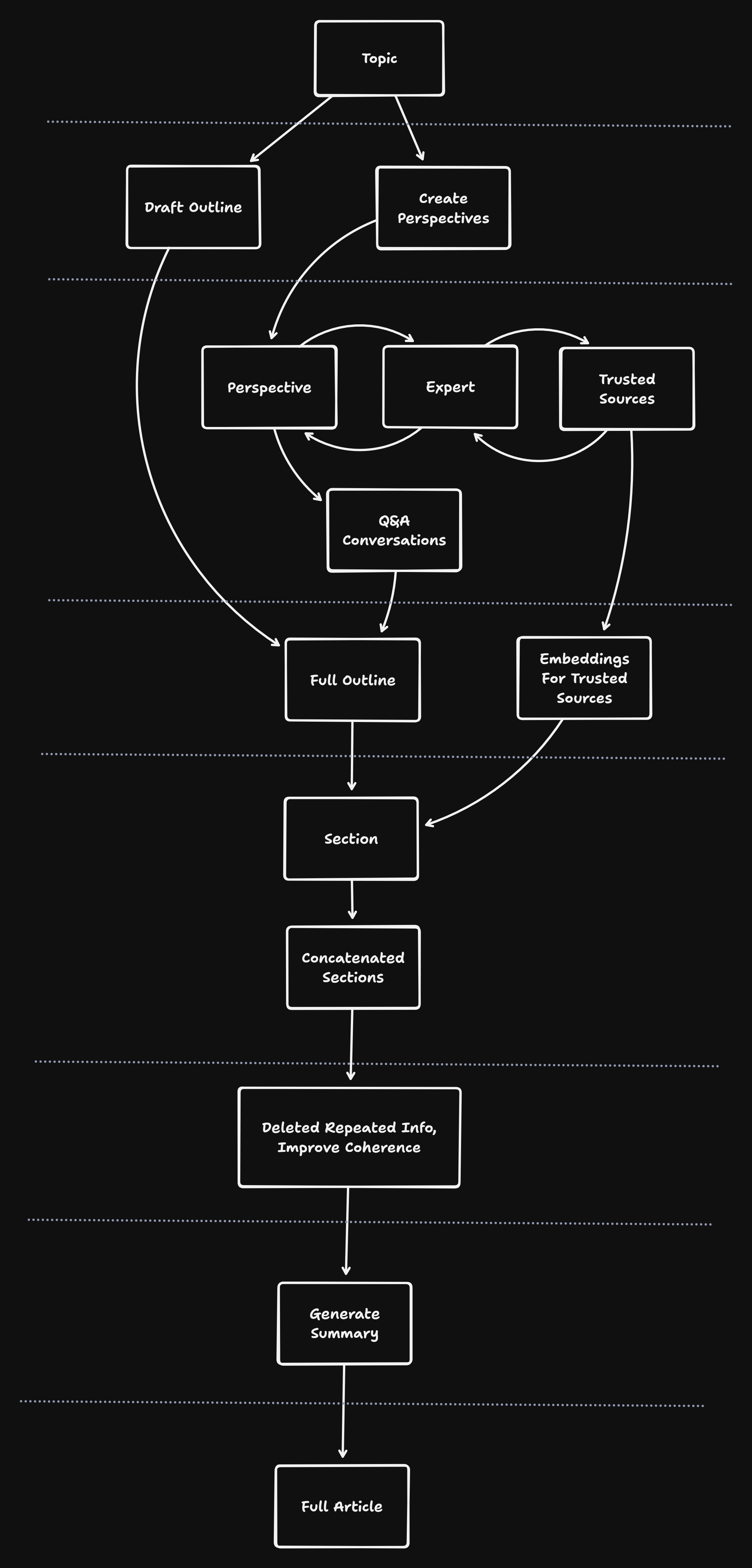Imagine you are reading a super interesting article on a subject. It’s well-written, in-depth, and engaging. The only twist? It was generated by AI.
This is exactly the challenge tackled by STORM, a framework designed to generate high-quality articles based on real research. While automated content generation is not new, producing well-structured, informative, and readable articles remains a difficult problem. STORM presents a complex AI workflow that attempts to bridge this gap.
STORM isn’t just about throwing words together—it follows a structured process, leveraging research-based inputs to craft coherent narratives. Instead of relying solely on statistical language models, it integrates a pipeline that ensures factual accuracy, logical flow, and contextual depth.
At its core, STORM exemplifies a sophisticated orchestration of AI components, combining natural language understanding, retrieval-based augmentation, and structured writing patterns. These elements work together to create text that doesn’t just read well but also aligns with verifiable sources.
For those working on AI-driven workflows, STORM serves as an example of how to balance automation with quality control. It highlights the importance of structured generation, ensuring that the output is not just fluent but also meaningful.
While AI-generated content often raises concerns about authenticity and misinformation, approaches like STORM suggest a path forward—one where AI assists in producing informative and credible articles, rather than just mimicking human writing.
